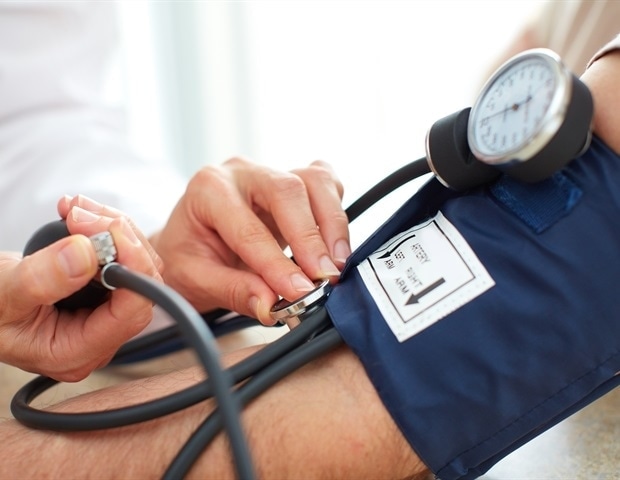In an evolving health landscape, emerging research continues to highlight concerns that could impact everyday wellbeing. Here’s the key update you should know about:
For some patients struggling to control high blood pressure, something as simple as having blood pressure monitors at home and texted reminders to use them could be the key to stabilizing or even lowering their blood pressures, according to a new study by researchers at the Perelman School of Medicine at the University of Pennsylvania.
When patients were mailed blood pressure cuffs, given the option to text back their readings to their clinical team,and also receive texted reminders to do so, 35 percent were able to get their blood pressure in check. Only 21 percent of those in the study who didn’t receive at-home cuffs but got regular care-readings taken in their primary care provider’s office-got the same result, according to the study published in JAMA Network Open.
We were able to find a way to make this user-friendly and gently keep the importance of monitoring on patients’ minds so they could make the lifestyle, medication, or other adjustments they needed.”
Shivan Mehta, MD, MBA, lead author, associate chief innovation officer at Penn Medicine
A nudge, but not the one researchers expected
The research team set up their study to test a “nudge,” the behavioral science-informed concept of framing options and offering people choices to influence behavior.
The nudge the researchers tested was “opt out” or “opt in” framing of the choice to get blood pressure cuffs. One arm of the study involved mailing blood pressure cuffs to patients with hypertension before calling to ask them if they would text their reading numbers to their primary care practice. In this case, the patients could “opt out” of the program and not take the readings or text the results.
The other nudge arm asked patients to sign up for receiving the cuff and text reminders before mailing the cuff to them (an “opt in” framing).
Patients randomized into the control arm of the study were not offered take-home cuffs but received the regular standard of care for patients with hypertension, which included regular blood pressure monitoring at office visits.
The researchers wanted to see which patients were more likely to sign up for a remote monitoring program. A secondary outcome measured was whether either choice led to more controlled blood pressure.
In total, 425 patients participated over a six month period. Analysis showed no statistically significant difference in the number of patients who took their blood pressure measurements between the opt-in or opt-out arms of the study (roughly 34 percent and 38 percent, respectively). There was also virtually no difference in the number of blood pressure readings that patients submitted over the period among patients who participated in texting (an average of 40.5 texted readings in the opt-out and 39.3 in the opt-in groups).
But the secondary measure of the trial excited the researchers, showing that those who received the blood pressure cuffs and texts at all, regardless of whether they were in the opt-in or opt-out groups, were more likely to improve their condition.
“For this trial, we only included patients who had hypertension that they weren’t able to control despite visits to primary care,” Mehta said. “So, what we see here is that the extra layer of support went a long way toward clearing some of the hurdles these people were experiencing, keeping them in touch with their care team to help with adhering to the medications they needed or increasing them when the need arose.”
Nudging better in future practice
While the researchers can’t say with total confidence why there was so little difference in the findings between the opt-in and opt-out groups, Mehta has thoughts based on prior research.
“The main reason is that recruitment for both arms still required a phone call and consent to participate,” Mehta explained. “We’ve seen that, in general, opt-out approaches often work best when we remove effort to participate by both the patient and clinical staff. So, moving forward, patients could be automatically enrolled through texting without requiring a phone call”
Another aspect of the study, which was undertaken through universal recruiting at the Penn Family Care Clinic: 86 percent of the participants were Black, a natural reflection of the local population that the clinic serves. And in the United States, roughly 55 percent of Black adults have high blood pressure, compared to just 31 percent of white patients. The Black patient population also are more likely to develop severe blood pressure issues than other racial or ethnic groups-and at an earlier age.
“The high rate of recruitment we had through this text message-based program holds promise to potentially mitigate care disparities,” Mehta said.
Already, the University of Pennsylvania Health System is incorporating some of the findings from the study into its Penn Medicine Health Heart initiative as well as other remote blood pressure monitoring initiatives as part of routine care. The initiative, similar to the study, uses text messaging to help patients with hypertension and high cholesterol address their conditions through regular reminders and personalized advice.
Source:
Journal reference:
Mehta, S. J., et al. (2025). Behavioral Economic Framing for Enrollment and Retention of Patients in Remote Blood Pressure Monitoring. JAMA Network Open. doi.org/10.1001/jamanetworkopen.2025.29825
